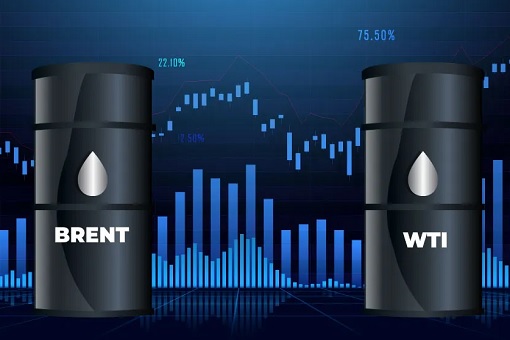The oil industry presents vast opportunities for traders who possess a deep understanding of market conditions and employ effective strategies. Let’s delve into important aspects of oil trading, including various types of this valuable resource, factors influencing prices, trading strategies, risk management rules, and examples of how to apply them.
Types of Oil
International markets feature different types of oil, each with its own characteristics. Let’s explore the main types of oil:
1. Brent Crude
– Origin: Extracted from oil fields in Europe, primarily in the North Sea.
– Quality: Light crude oil with low sulfur content.
– Usage: Serves as a key benchmark for determining international oil prices.
2. West Texas Intermediate (WTI)
– Origin: Produced in the West Texas region and northern Gulf of Mexico in the United States.
– Quality: Light crude oil, slightly higher sulfur content compared to Brent.
– Usage: Predominantly traded on the American market.
In addition to Brent and WTI, there are other oil benchmarks such as Dubai Crude, OPEC Basket, and more, which are utilized in different regions and have their own characteristics.

When choosing between Brent and WTI, it is important to consider personal preferences, trading strategies, and the availability of oil in the market. Both benchmarks are widely recognized, and their prices are often interrelated and mutually influenced. Therefore, when making a decision, it is crucial to pay more attention to selecting a reliable broker as it can significantly impact trading success. One example of such a broker is AMarkets, an international online broker that offers high-speed trade execution of just 0.03 seconds, enabling clients to receive instant order execution. Moreover, they provide various types of accounts, including cryptocurrency accounts where the balance grows with the increase in the Bitcoin exchange rate. According to analysts’ forecasts, the Bitcoin rate is expected to experience significant growth by the end of 2023.
By the way, one of the notable advantages of trading Brent and WTI oil with AMarkets is the absence of swaps, which means less trading fees and more profit for a trader. This is an important factor to consider when selecting a broker to trade oil.
Factors Affecting Oil Prices: Economic, Political, Geographic, and Supplier Actions
The price of oil is subject to the influence of various factors, and understanding these factors is crucial for successful oil trading. Let’s examine the key factors that impact oil prices and provide real-life examples of their effects.
1. Economic Factors: The economic growth and downturn of major global economies have a significant influence on oil demand. For instance, rapid economic growth in China can lead to increased oil demand and higher prices.
2. Political Factors: Political events and decisions can have a substantial impact on oil prices. Geopolitical conflicts, wars, and sanctions can disrupt oil supplies and drive prices up. For example, the imposition of sanctions against Iran had a significant impact on oil prices.
3. Geographic Factors: Seasonal and weather conditions also influence oil prices. For example, hurricanes in the Gulf of Mexico can temporarily disrupt oil production and supply, causing price increases.
4. Supplier Actions: Decisions made by major oil suppliers, such as OPEC and Russia, can significantly affect prices. Disagreements over oil production and export volumes can lead to price fluctuations.
By closely monitoring and analyzing these factors, traders can make informed decisions and adjust their strategies accordingly in the dynamic oil market.

Oil Trading Strategies: Choosing the Right Approach for Successful Trading
Experienced traders employ various strategies to trade oil effectively. Determining a suitable strategy that considers your goals, trading style, and current market conditions is key to achieving success. Let’s delve into some key strategies and provide real-life examples of their application.
1. Fundamental Analysis: Analyzing Key Factors
Fundamental analysis involves studying economic, political, and other events that influence oil supply and demand. This may include analyzing oil inventories, production indicators, political events, and even weather conditions. For example, traders can analyze oil inventory data to predict changes in supply and demand and assess the impact of geopolitical events on oil prices.
2. Technical Analysis: Studying the Past to Predict the Future
Technical analysis is based on analyzing historical price and trading volume data. It helps traders identify trends and market entry and exit points. For instance, traders may use moving averages to determine the trend direction and support and resistance levels to make decisions about entering or exiting a trade.
3. News-Based Strategy: Reacting to Events
A news-based strategy involves reacting to price changes after the release of important news that can affect the oil market. Traders can monitor news about geopolitical conflicts, legislative changes, economic data, and other events to analyze their impact on oil prices and make relevant trading decisions.
4. Hedging Strategy: Reducing the Risk
A hedging strategy allows traders to mitigate the risk of unfavorable oil price changes. For example, traders can open short positions to protect against oil price declines or use futures contracts to manage risks. The hedging strategy helps balance risks and protect a trader’s portfolio.
Choosing the right oil trading strategy depends on individual preferences and trader goals. Traders can combine different strategies or choose one that aligns better with their trading style. Regardless of the selected strategy, continuous learning, market analysis, and a deep understanding of the factors influencing oil prices are key to success in oil trading.

Risk Management in Oil Trading: Effective Strategies and Examples
Risk management is a crucial component of successful oil trading. To protect their capital and limit potential losses, traders employ various risk management strategies. Here are a few important tools and approaches that can help you achieve success and protect your investments.
1. Determining Risk Level
Before engaging in trading, it is essential to determine your willingness to accept risk on each trade. It is recommended to risk no more than 2% of your capital on a single trade. For example, if your capital is $10,000, the maximum amount you are willing to lose on one trade should not exceed $200. This helps you control potential losses and preserve your capital in case of unsuccessful trades.
Example: A trader has a capital of $50,000. According to a 2% rule, they can afford to lose no more than $1,000 on a single trade.
2. Using Stop Loss Orders
A stop loss order is a vital risk management tool. By setting a stop loss level, traders define a point at which a position is automatically closed, limiting potential losses. This allows for risk control and prevents significant losses.
Example: A trader opens a long position on oil at $70 and sets a stop loss at $65. If the oil price reaches or falls below this level, the position is automatically closed, limiting potential losses.
3. Position Sizing
It is important to continuously monitor the size of your positions and manage them according to your risk management strategy. Trading with a large number of contracts or shares can increase potential profit but also raise the level of risk. Ensure that the size of your position aligns with your acceptable risk level to avoid exposing your capital to excessive risk.
Example: A trader has calculated their maximum acceptable risk level for a trade at $500. They analyze the current market conditions and determine that a position size of 100 oil contracts aligns with their risk profile and the maximum potential loss of $500.
Trading oil is an exciting and potentially profitable activity. Remember to conduct your analysis, develop strategies that align with your goals and trading style. Most importantly, manage your risks and be prepared for inevitable market fluctuations. The oil market is constantly changing and requires traders to continuously improve their skills and knowledge.

|
|
May 30th, 2023 by financetwitter
|


|

|

|

|

|

|




























Comments
Add your comment now.
Leave a Reply